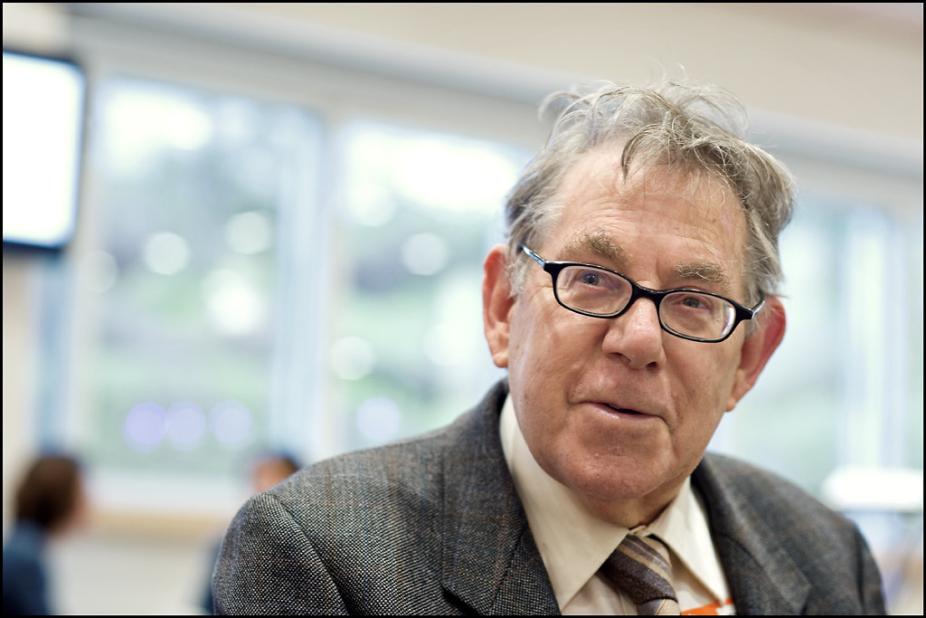Annual Paul Crutzen Lecture
In honor of Paul Crutzen, former ACOM Director and Nobel Prize Laureate, the Atmospheric Chemistry Observation and Modeling Laboratory at NCAR is holding an annual lecture that addresses an important research question of societal importance related to atmospheric chemistry.

Paul Crutzen was born in 1933 in Amsterdam, Netherlands, where he studied to become a civil engineer and later worked at the city's Bridge Construction Bureau. In 1958, he and his family moved to Sweden, where he found work as a computer programmer at the Department of Meteorology at Stockholm University. At the University, he began his postgraduate studies, earning a PhD in atmospheric science. While working with a colleague from the United States to develop a numerical model of the oxygen allotrope distribution in the stratosphere, mesosphere and lower thermosphere, he became interested in the photochemistry of atmospheric ozone and stratospheric chemistry. While the main topics of research conducted at Stockholm University were dynamics, cloud physics, the carbon cycle, chemical composition of rainwater, Crutzen preferred to conduct fundamental research related to chemical processes in the atmosphere, and decided to devote his research to stratospheric ozone.
In 1970, Crutzen demonstrated that nitric oxide accelerates a chemical reaction in which ozone (O3) is transformed into molecular oxygen (O2). NCAR became involved in ozone-related research under Crutzen’s direction as the director of the Atmospheric Quality Division (later the Atmospheric Chemistry Division and now the Atmospheric Chemistry Observations and Modeling Laboratory). Under Crutzen’s leadership in the late 1970s, NCAR chemists and instrument developers put together an impressive array of sensors designed to sample trace gases - scarce but critical components of the troposphere and stratosphere -from airborne and balloon-borne platforms. Ozone was just one of many constituents studied with these tools. Over time, Crutzen contributed a theory that an increased thinning of the ozone layer at the poles could be explained by the emission of industrial gases. As ozone plays a major role in absorbing ultraviolet radiation from the sun, the thinning of this layer would negatively impact life on earth.
Crutzen campaigned for a worldwide ban on all substances dangerous to the atmosphere that protects the Earth. The 1987 Montreal Protocol on Substances that Deplete the Ozone Layer, a global agreement to protect the stratospheric ozone layer by phasing out the production and consumption of ozone-depleting substances, was also largely the result of his efforts. According to many observers, the Montreal Protocol is “a landmark agreement that has successfully reduced the global production, consumption, and emissions of ozone-depleting substances (ODSs). ODSs are also greenhouse gases that contribute to the radiative forcing of climate change. Using historical ODSs emissions and scenarios of potential emissions, the ODS contribution to radiative forcing would have been much larger if the ODS link to stratospheric ozone depletion had not been recognized in 1974 and followed by a series of regulations. The climate protection already achieved by the Montreal Protocol alone is far larger than the reduction target of the first commitment period of the Kyoto Protocol. Additional climate benefits that are significant compared with the Kyoto Protocol reduction target could be achieved by actions under the Montreal Protocol, by managing the emissions of substitute fluorocarbon gases and/or implementing alternative gases with lower global warming potentials.”
In 1995 Crutzen and his colleagues M. J. Molina and F. S. Rowland received the Nobel Prize for Chemistry in recognition of their work in protecting the ozone layer.
2019 Paul Crutzen Lecture on 20 June 2019
The guest speaker for the 2019 lecture is Prof. Will Steffen from the Australian National University and the Stockholm Resilience Centre, and former Director of the International Geosphere Biosphere Programme (IGBP).
The event will consist of individual meetings at NCAR as well as two seminars, one for NCAR staff and one for a broader public.
At 3:30 pm: NCAR/ACOM seminar on “Feedbacks, Thresholds and Tipping Cascades in the Earth System”, Mesa Lab, Main Seminar Room.
At 7 pm: Public Lecture entitled: “The Anthropocene: Where on Earth are we Going?” Mesa Lab, Main Seminar Room. This first inaugural lecture is part of the 2019 NCAR Explorer Series.